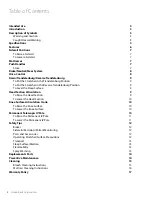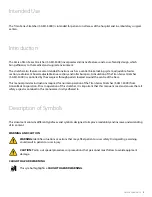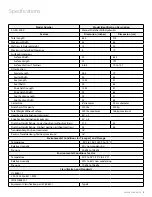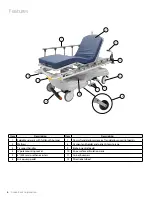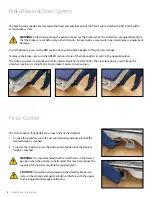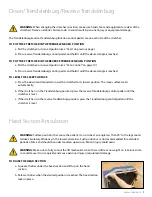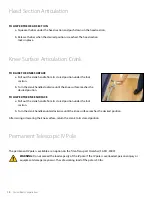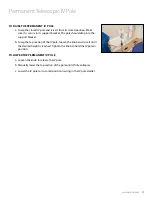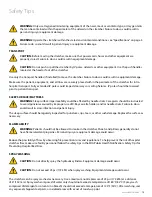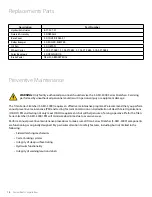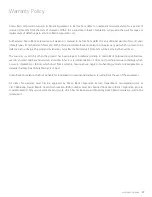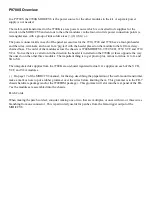
12
Amico Beds Corporation
Safety Tips
BRAKES
WARNING:
Unless transporting the patient, always set the brakes when the stretcher is occupied. Reconfirm
that the brakes are set before any patient transfer. Failure to do so may result in injury or equipment damage.
Patients often use the stretcher for support when getting out of the stretcher and could be injured if the
stretcher moves unexpectedly. After setting the brakes, push and pull the stretcher to make sure it is stable.
SIDERAILS/RESTRAINTS/PATIENT MONITORING
WARNING:
Evaluate patients for entrapment risk according to facility protocol, and monitor patients
appropriately. Make sure that all siderails are fully latched when in the raised position. Failure to do either of
these could result in serious injury or death.
NOTE:
Siderails are intended to be a reminder to the patient of the stretcher’s edge, not a patient-restraining device.
When appropriate, Amico recommends that medical personnel determine the proper methods necessary to make
sure a patient remains safely in the stretcher.
Siderails may serve several beneficial uses including providing an edge reminder and stretcher exit assist. The uses
of siderails may also provide a sense of security. The use of siderails in any position should be appropriate for the
patient’s need, after assessing any risk factors according to the facility protocols for safe positioning.
When raising the siderails, a click indicates that the siderails are completely raised and locked in place. Once the click is
heard, gently pull on the siderail to make sure it is latched correctly in position.
WARNING:
Patient restraints are not intended as substitutes for good nursing practices. Physical restraints,
even properly installed, can result in entanglement, physical injury or death, particularly with agitated and
disoriented patients. Monitor patients when using physical restraints in accordance with legal requirements
and facility protocols.
1. Develop guidelines for all patients, indicating:
• Which patients may need to be restrained and the appropriate restraint to utilize.
• The proper method to monitor a patient, whether restrained or not, including time interval, visual check of
restraint, etc.
2. Develop training programs for all caregivers concerning the proper use and application of restraints.
3. Clarify the need for restraint devices to families or guardians.
4. Set the stretcher at its lowest position whenever a caregiver is not in the room.
For restraining devices, consult the restraint manufacturer to verify the correct application of each restraining device.
PARTS AND ACCESSORIES
Use only Amico parts and accessories. Modification of the stretcher shall be at the customer’s risk and liability.
OPERATING STRETCHER/SURFACE PRECAUTIONS
WARNING:
Do not operate the stretcher in the presence of flammable gas or vapors. Doing so could result in
personal injury or equipment damage.


